In the shadow of Europe’s largest war since World War II, few expected a small Western European nation to become one of Ukraine’s steady military partners. Yet Belgium has stepped up—pledging fighter jets, advanced air defense systems, ammunition, naval support, and a decade-long security pact.
Its influence is amplified by a unique role in Europe’s financial battlefield. Brussels-based Euroclear holds over €180 billion in frozen Russian assets—the largest cache in Europe. Taxes on the interest from these holdings fund much of the EU’s military aid to Ukraine, giving Belgium outsized leverage in sustaining Kyiv’s war effort.
The record, however, has gaps. As of mid-2025, Belgium’s pledge of 30 F-16s—the largest from any single country—remains undelivered. And while Brussels is central to the frozen-assets plan, it opposes full confiscation, limiting Ukraine’s access to the principal sum.
When President Volodymyr Zelenskyy visited Brussels in May 2024, he signed a landmark 10-year bilateral security agreement—the 11th such pact that year, launched after the G7’s 2023 Joint Declaration of Support. For Belgium, it was a promise that its backing would go beyond immediate aid, locking in a decade of military cooperation.
In collaboration with the Dnistrianskyi Center, Euromaidan Press presents this English-language adaptation of Dariia Cherniavska’s analysis on Belgium’s role in Ukraine’s defense, recovery, and pursuit of justice.
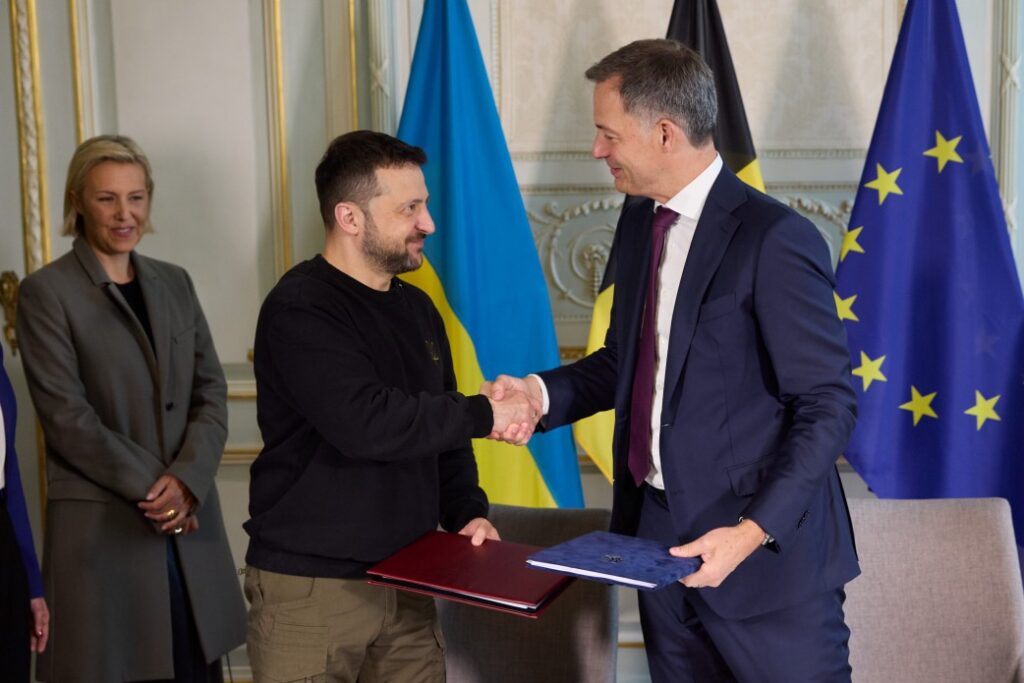
A quiet but strong hand
From the beginning of Russia’s full-scale invasion in 2022, Belgium’s contributions weren’t always front-page news. Unlike some larger NATO allies, its aid wasn’t accompanied by high-profile announcements or flashy military convoys. But behind the scenes, Belgium was delivering—and planning for the long haul.
That planning came into focus in May 2024, when Belgium and Ukraine formalized their cooperation under a 10-year security deal. The agreement wasn’t symbolic. It came with a promise: €977 million in military aid for 2024 alone, and a further €1 billion annually starting in 2025.
F-16 coalition: Record pledge, slow reality
One of Belgium’s most high-profile commitments is its role in the F-16 fighter jet coalition. Belgium has pledged 30 F-16s by 2028—more than any other single donor. These American-made aircraft symbolize Ukraine’s modernization and its fight to reclaim the skies.
Yet as of mid-2025, none have been delivered. Officially, the delay is due to Belgium’s own transition from F-16s to newer F-35s, creating bottlenecks in the transfer process.
To bridge the gap, Belgium has invested heavily in training. Since 2022, over 3,000 Ukrainian troops have been trained. In spring 2024, 50 flight instructors and two F-16B aircraft were sent to Denmark to prepare Ukrainian pilots, engineers, and mission planners. Meanwhile, Melsbroek airbase hosted intensive aircrew training—ensuring Ukraine’s defenders are ready the moment those jets arrive.
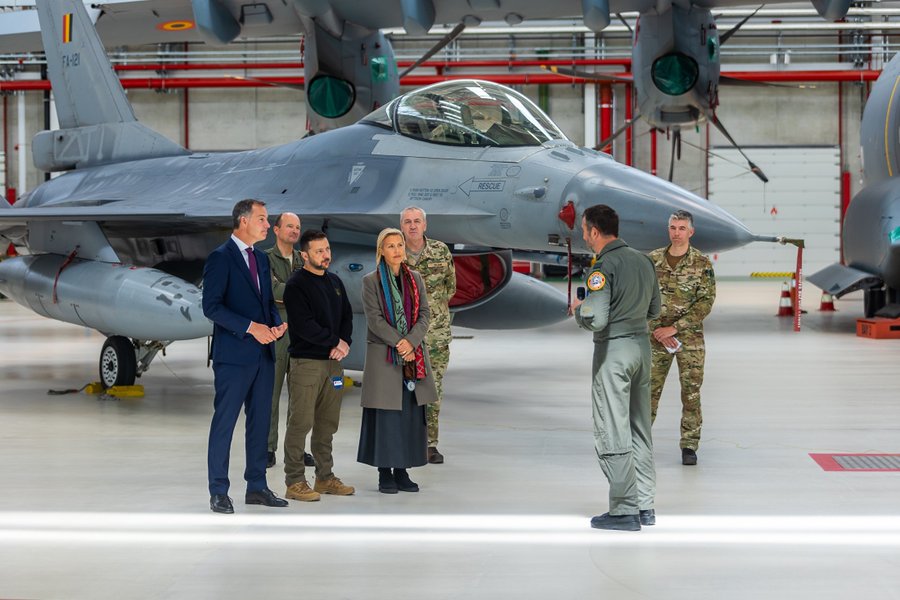
Air defense: Guarding the skies above Ukraine
Protecting Ukraine’s airspace is a matter of survival. Belgium has made air defense a cornerstone of its aid:
- €200 million in 2024 for Germany’s air defense initiative
- €150 million in 2025 via the German-led Integrated Air and Missile Defense (IAAD) coalition
- Deliveries supported by Belgium’s A400M transport aircraft
- 20 modernized Cerberus systems announced in May 2025 to defend against drones and missiles
These systems are critical—but the scale of Russian missile and drone attacks means Ukraine’s needs outpace even the largest contributions. Every air defense battery or missile delivery helps, but the demand is unrelenting.
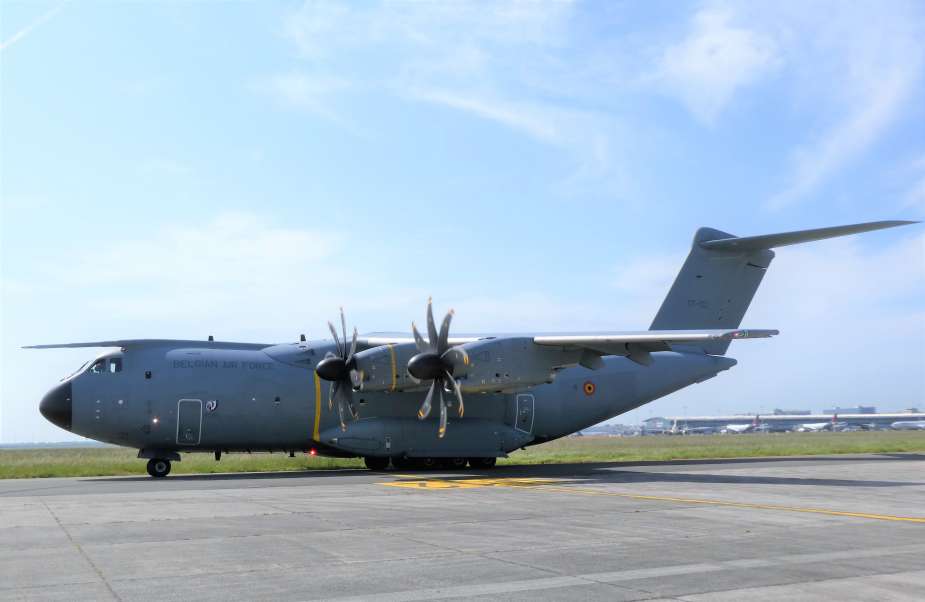
Naval support: Minehunter and maritime drones
Belgium’s support extends to the seas. In June 2025, it transferred the decommissioned minehunter Narcis—renamed Mariupol in honor of the city destroyed by Russian forces in 2022. Equipped with advanced unmanned underwater drones, the ship will help clear mines from the Black Sea and reopen vital trade routes.
Training has been central to this maritime support. In 2023, Belgium trained Ukrainian operators on 10 R7 underwater drones from ECA Robotics Belgium—later delivered for underwater inspection and maintenance. Training expanded in 2024 to various strike drones, and in 2025 to the Mariupol’s crew and air defense technicians.
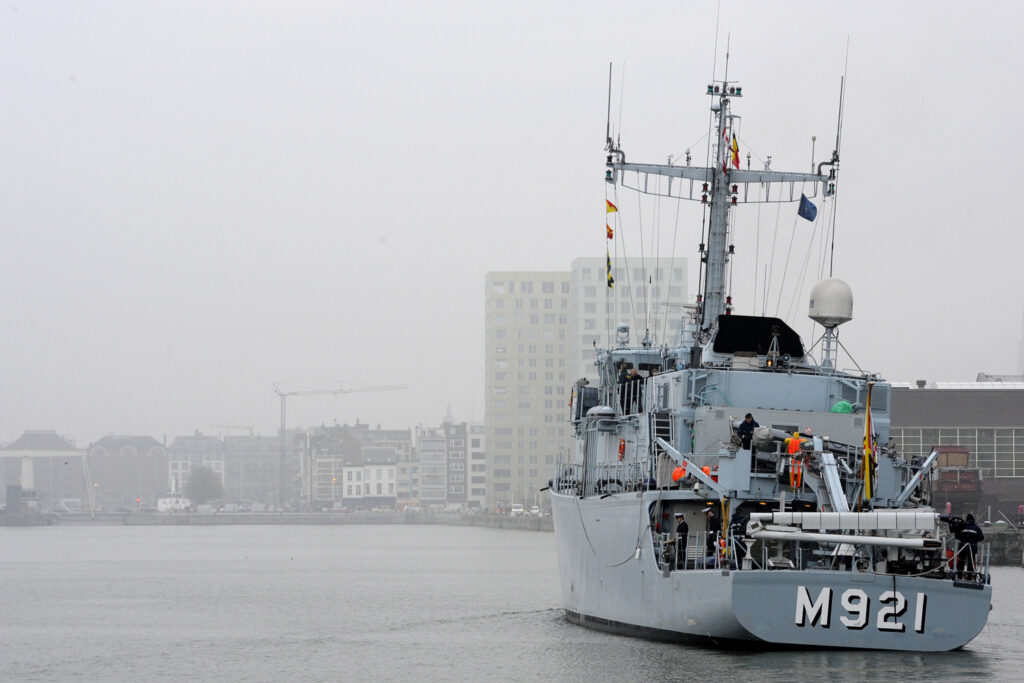
Ammunition, armor, and battlefield logistics
When Ukraine’s frontlines started running dangerously low on ammunition, Belgium was one of the nations to step up. In 2024, it joined the Czech-led ammunition coalition, committing €200 million toward purchasing 50,000 artillery shells—each one a lifeline on the battlefield.
That same year, Belgium pledged three Caesar self-propelled howitzers, valued at €12 million, under the artillery coalition. Though delivery delays have been reported, the promise remains.
Belgium has also provided:
- Mistral air defense launchers
- AIM-120 AMRAAM missiles for NASAMS
- Hundreds of Volvo military trucks
- M113 armored personnel carriers
- Lynx tactical armored vehicles
These contributions may lack the headline appeal of fighter jets, but they keep Ukraine’s forces operational under intense pressure.
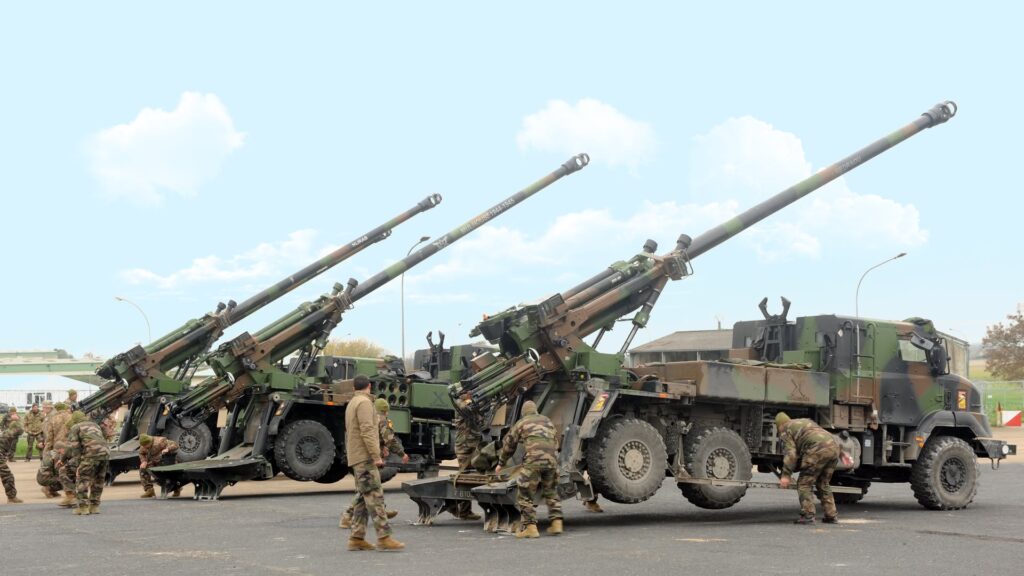
Building Ukraine’s defense industry
Belgium’s assistance goes beyond delivering equipment to the front. In early 2024, the Ukrainian and Belgian defense ministries signed a Memorandum of Understanding, launching a collaborative effort to co-develop new defense technologies.
One of the first tangible results came from Belgian defense firm John Cockerill, which undertook the modernization of dozens of Bandvagn 206 all-terrain vehicles destined for Ukraine—building on its earlier work upgrading M113 armored personnel carriers before their transfer to the Ukrainian Army.
Belgium is also helping Ukraine expand its own defense manufacturing capacity. In partnership with Thales Belgium, work is underway to co-produce 70mm FZ275 LGR rockets, with a range of up to 3,000 meters. Designed for precision and rapid deployment, these rockets will strengthen Ukraine’s ability to intercept Russian drones and enhance short-range air defense.
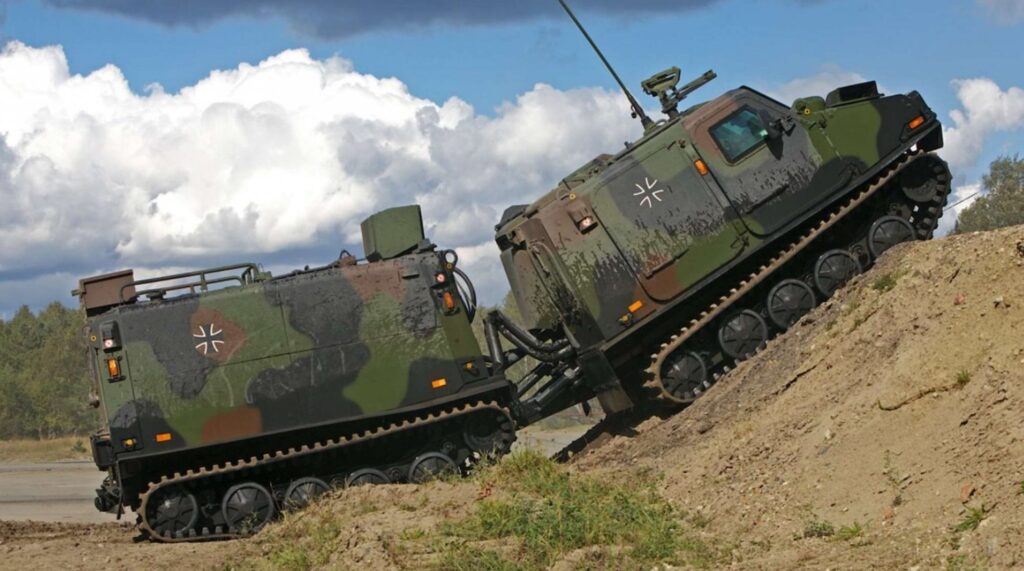
Frozen Russian assets: Central role, clear limits
Belgium’s Euroclear holds the largest frozen Russian asset stockpile in Europe—over €180 billion. Since spring 2024, the EU has been transferring interest from these holdings to Ukraine, with the first €1.5 billion going toward air defense, ammunition, and defense industry projects.
By May 2025, Ukraine had received €6 billion via the G7’s Extraordinary Revenue Acceleration (ERA) program, with €35 billion planned for the year.
Belgium, however, opposes full confiscation of the assets, citing legal risks. Instead, it supports keeping them frozen indefinitely—even if some EU states refuse to renew sanctions—so that interest income continues to flow.
Reconstruction and recovery
Belgium’s role in Ukraine’s recovery goes hand in hand with its financial contributions from frozen Russian assets. Through the Belgian development agency Enabel, Ukraine will receive €150 million by 2028 for the comprehensive reconstruction of Chernihiv and Kyiv Oblasts. Funded from the profits of frozen Russian assets held in Belgian jurisdiction, this aid will rebuild schools, healthcare facilities, and energy infrastructure.
Separately, under the Chernobyl International Cooperation Account managed by the EBRR, Belgium contributed over €200,000 at the end of 2024 to restore equipment at the Chernobyl Nuclear Power Plant damaged during Russia’s occupation.
A billion-euro blueprint for stability
In April 2025, the Belgian government unveiled a €1 billion military aid plan for Ukraine, to be renewed every year through 2029. It was one of the most ambitious announcements yet from a European country—and about two-thirds of that funding is being funneled through Belgian companies.
This dual-purpose strategy doesn’t just support Ukraine—it strengthens Belgium’s own defense industrial base, ensuring production remains efficient, scalable, and strategically aligned with EU and NATO goals.
Training, technology, and trust
Belgium’s training efforts go far beyond pilots. In 2023, it trained Ukrainian drone operators, including how to use 10 R7 underwater drones from ECA Robotics Belgium—systems later delivered as part of its military aid and used for inspection, surveillance, and maintenance of underwater infrastructure.
In 2025, that training expanded to include the minehunter crew, drone pilots, and technicians managing air defense systems.
Through the IT Coalition, Belgium has also invested heavily in Ukraine’s cyber and communications infrastructure, contributing to a €1.1 billion effort to modernize command centers, secure communications, and data infrastructure.
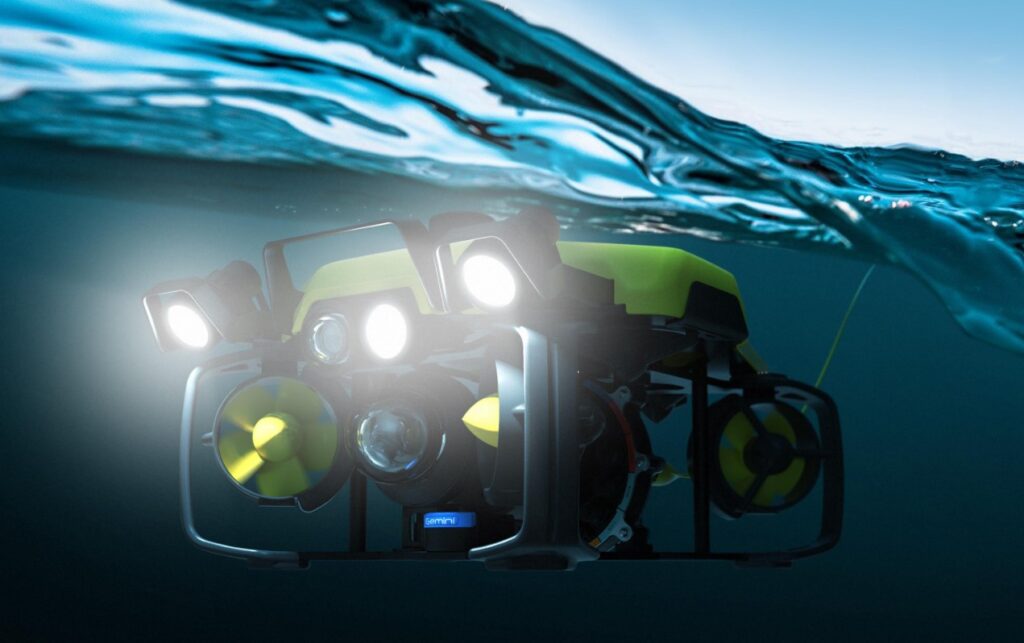
Why Belgium’s role matters
Belgium may not have the military scale of the US or economic might of Germany, but it offers something just as vital: reliability and long-term commitment. It is a partner that pairs battlefield support with industrial cooperation, reconstruction aid, and steady financial backing.
With 30 F-16s pledged, €1 billion per year committed, and a unique position at the heart of Europe’s frozen asset system, Belgium’s influence will remain significant as Ukraine’s fight continues.



